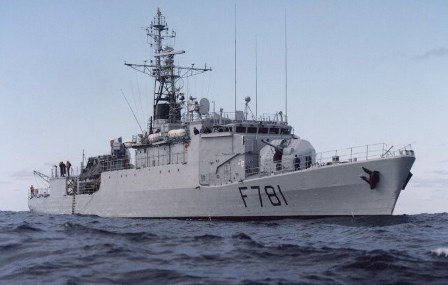Estienne d’Orves-class (Type A69)
Summary
| Origin country | 🇫🇷 France |
| Category | Frigate |
| Subtype | Missile frigate |
| Manufacturer | DCN, Lorient |
| Year commissioned | 1976 |
| Units | F781 D'Estienne d'Orves, F782 Amyot d'Inville, F783 Drogou, F784 Détroyat, F785 Jean Moulin, F786 Quartier-Maître Anquetil, F787 Commandant de Pimodan, F788 Second-Maître Le Bihan, F789 Lieutenant de vaisseau Le Hénaff, F790 Lieutenant de vaisseau Lavallée, F791 Commandant L'Herminier, F792 Premier-Maître L'Her, F793 Commandant Blaison, F794 Enseigne de vaisseau Jacoubet, F795 Commandant Ducuing, F796 Commandant Birot, F797 Commandant Bouan |
| Current operators | 🇫🇷 France |
Description
The D'Estienne d'Orves-class avisos, also known as A69 type avisos, comprise a class of naval vessels designed for anti-submarine warfare and coastal defense. These vessels are versatile and capable of undertaking high sea escort missions, including support roles with the French Overseas Operational Bases (FOST). They were initially constructed for the French Navy but were also ordered by other naval forces.
These avisos, akin to light corvettes in size, exhibit a simple, robust design coupled with an economical and reliable propulsion system. This design approach renders them suitable for overseas presence missions. They came into existence as replacements for the older E 50 and E 52 type escorteurs of the French Navy. Two SEMT Pielstick 12 PC 2 V400 diesel engines, rated at 8,900 kilowatts, propel the vessels up to 23.5 knots, achieving a range of 4,500 nautical miles at a cruising speed of 15 knots. Not all ships in the class have fin stabilizers; the Commandant Ducuing and Commandant Birot are the exceptions.
In terms of armament, the class was initially planned to have two different configurations, but eventually, all ships were equipped with Exocet MM38 surface-to-surface missiles. The armament also includes a 100 mm CADAM gun turret, two 20 mm modèle F2 guns, four 12.7 mm machine guns, torpedo launchers for L3 or L5 torpedoes, and a 375 mm rocket launcher. The aviso's sensor suite comprises radars and sonar designed for coastal waters operations. The ships have countermeasure capabilities including radar interceptors, decoy launchers, and a SLQ-25 Nixie system installed in the mid-1980s.
Over the years, modifications were made to the class, notably the installation of the Nixie countermeasure system and heightening of the funnels to address exhaust issues. Some ships saw additional changes like the implementation of diesel engines with infrared suppression or the installation of satcom terminals. However, the idea of modifying ships to accommodate helicopters was ultimately abandoned. By 2009, the remaining French ships were reclassified as offshore patrol vessels and had some armaments, such as the surface-to-surface missiles and heavy anti-submarine weapons, removed. These vessels are scheduled to be decommissioned between 2024 and 2027, with their replacement by a new class of patrol vessels expected around 2026.
Countries besides France have also operated these avisos. The Argentine Navy acquired a total of three ships, forming their Drummond-class corvettes. These vessels were initially intended for South Africa but were blocked by UN sanctions and thus sold to Argentina. Turkish Navy, recognizing the capabilities of these avisos, procured six of them in 2000 to enhance their coastal patrol operations, releasing more advanced vessels for frontline duties.
Technical specifications
| Estienne d’Orves | |
|---|---|
| Displacement | 1250 tons |
| Range | 8000 km at 15 knots |
| Crew | 90 members |
| Width | 10.3 m (33.8 ft) |
| Length | 80.0 m (262.5 ft) |
| Propulsion | 2 SEMT Pielstick 12 PC2 diesel engines with a power of 12,000 hp - 2 propellers |
| Thrust | 840 hp |
| Armament | 2 MM-38 (I 2) + 1 100mm Mod.68 gun + 2 20mm F2 guns + 4 12.7mm machine guns + 4 550mm T/ASM + 1 LR ASM Mod.72 |
| Maximum speed | 24 knots |
Photo of Estienne d’Orves class
